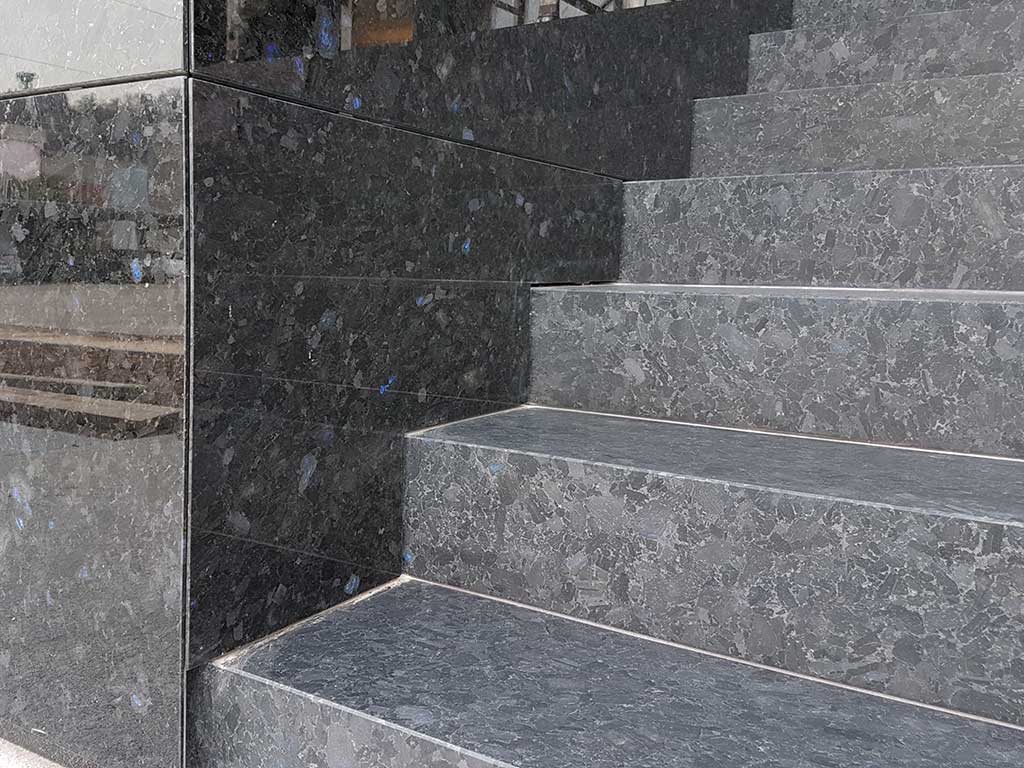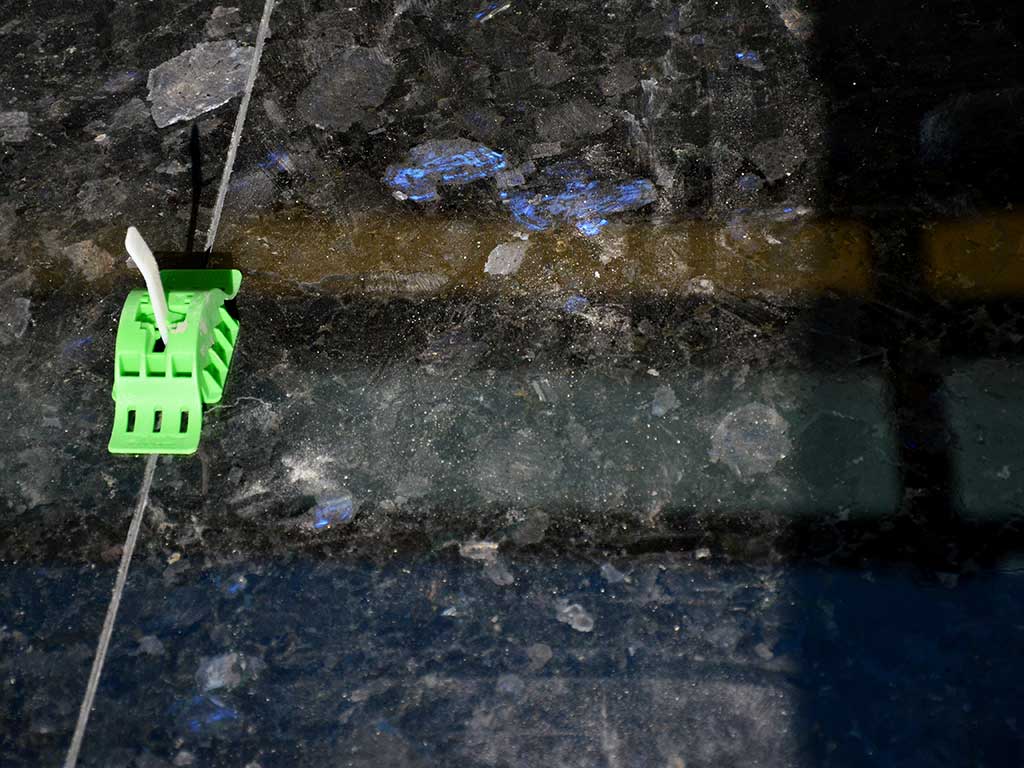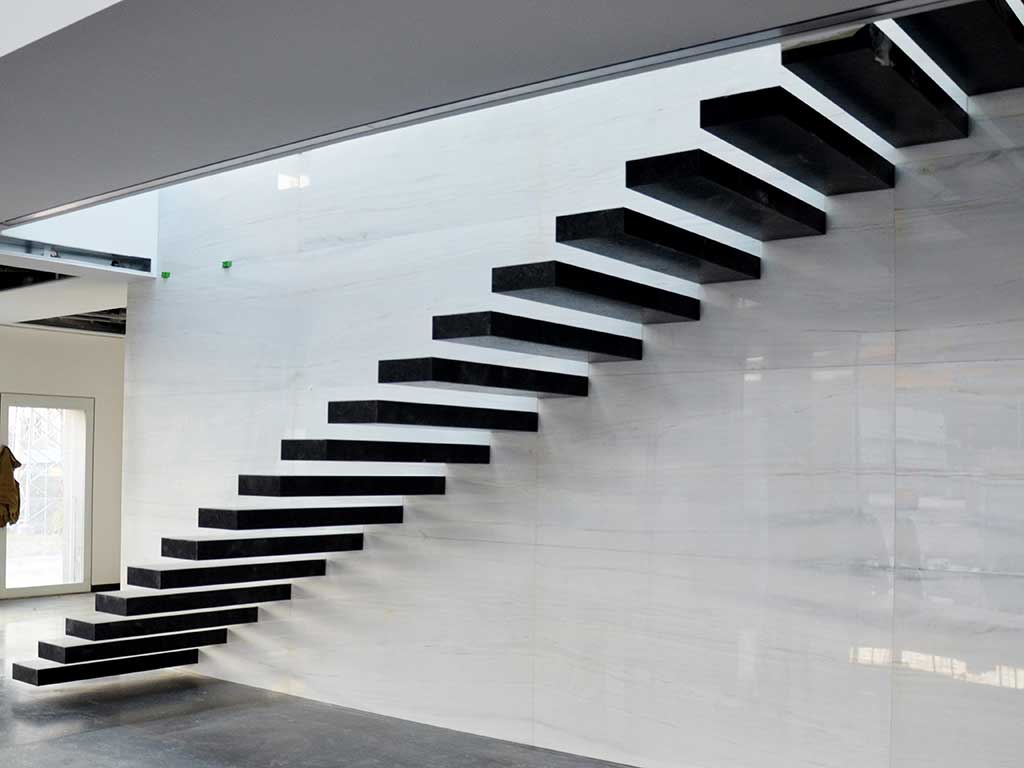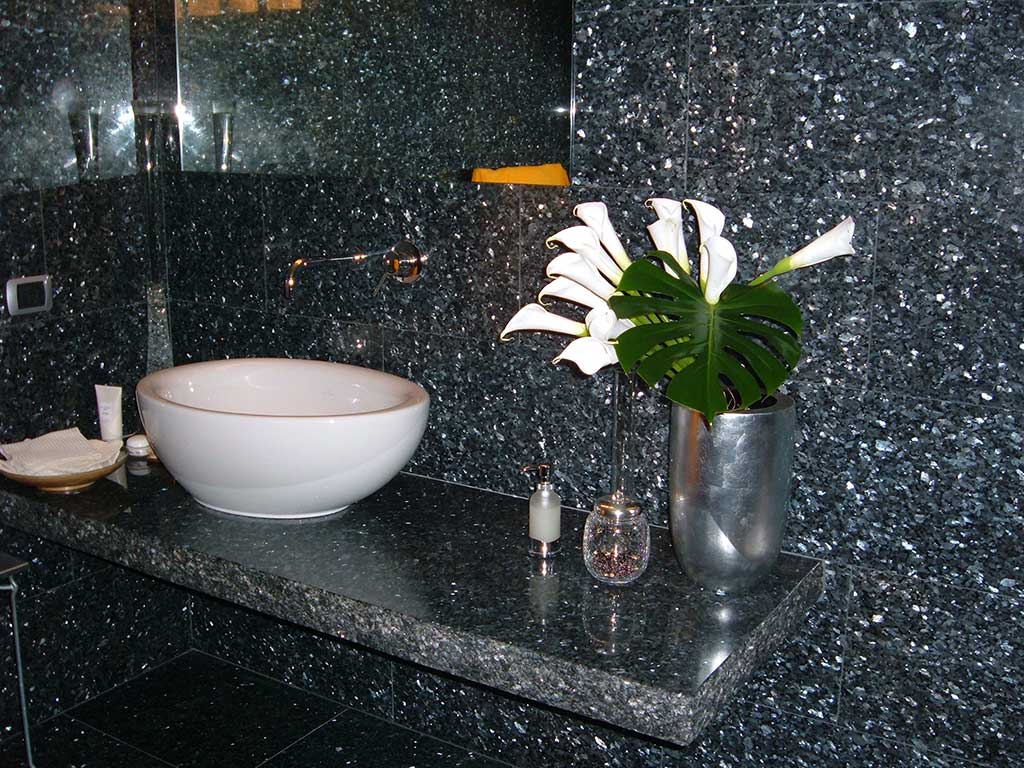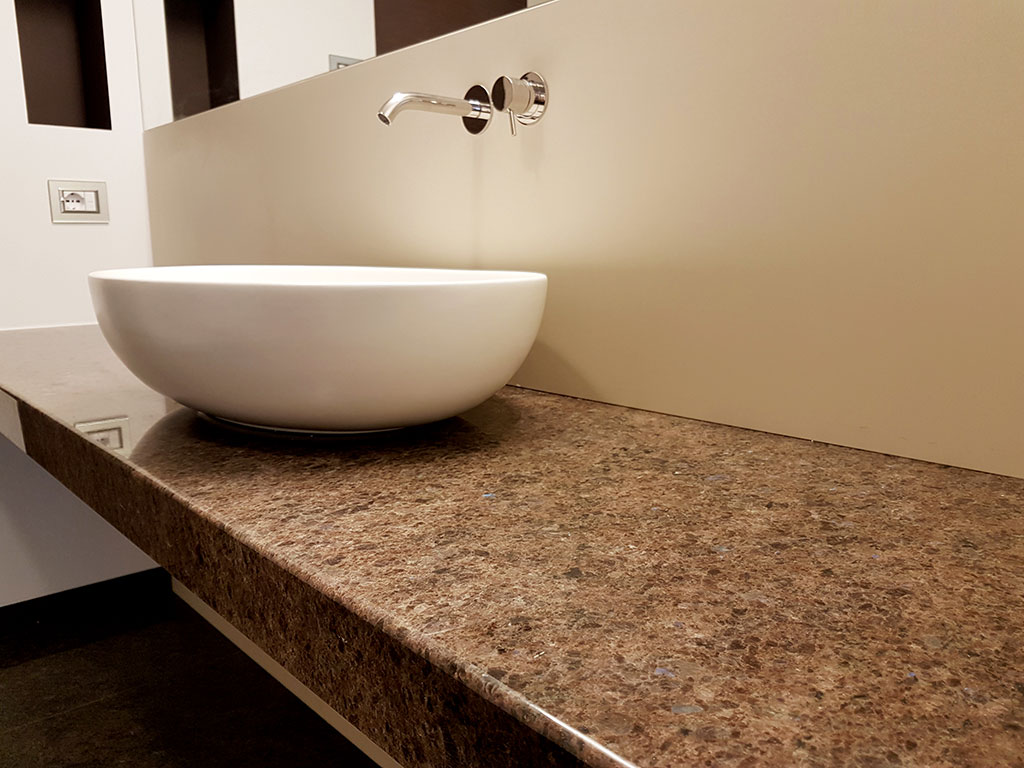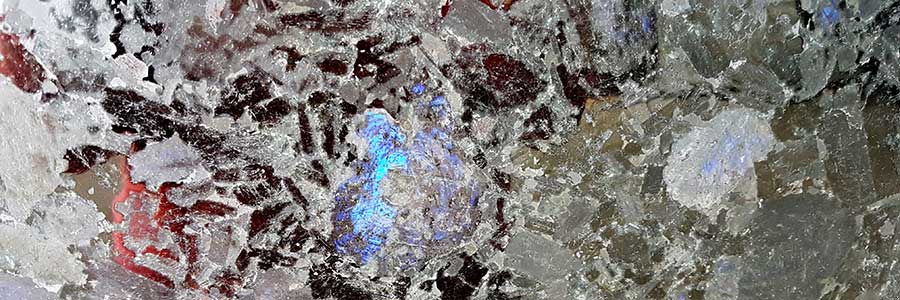
On a sunny day the granite walls and the big entry staircase in our new office building sparkle and glitter. On closer examination one will realize that, depending on the position and the light, the glittering and sparkling often change, however, a particularly fascinating and iridescent gleam always captivates the visitor’s eyes.
What stunning choreographic effects has the labradorite! That’s the first impression that visitors gain on a sunny day at Marmi Rossi…
Characteristics and differences between granite and labradorite
Labradorite and granite are two different rock types of the same geological group: both belong to the group of feldspar minerals (which are contained in many rocks of the earth’s crust); labradorite, as well as granite are solid rocks with a typical transparent shininess. The most important feldspars are the mainly translucent plagioclase and the typically opal k-feldspar.
The main difference between granite and labradorite is, that granite may contain both feldspars, therefore also labradorite crystals, whereas the labradorite contains only plagioclase.
Granite and labradorite fulfil primarily the same purpose. Granite was used for all kind of buildings already in the past, as witnessed by the famous Red Pyramid in Egypt. For a long time, tomb stones and monuments were built of granite, but nowadays it is applied in the interior as well as in outdoor areas.
Labradorite shows magnificent colour reflections, called labradorescence, which made this material so popular, same as the semi-precious stone for the jewellery design. When used in the construction sector, the colour reflections of natural stone definitely enrich pavements, decorative cladding and ornamental parts of buildings, as well as kitchen, table and vanity tops. Last but not least, every architectonic element is valorised by the opalescent colour reflections of the labradorite crystals.
Labradorite from all over the world at Marmi Rossi
In our warehouse you’ll find a lot of different types of labradorite from all parts of the world, which have various effective colour and light reflections: the vivid brilliance of the colours blue, violet, green, yellow and orange are constantly changing, depending on the incidence of light.
Blue Pearl, Labrador TFV, Emerald Pearl and Labrador Antique come from Scandinavia.
The basic colours of these materials range from grey blue to green or even to bright brown; they all have a medium grained structure and iridescent light reflections, that remind us of the Northern lights. In comparison, the labradorite Volga Blue from Ukraine has a dark, almost black basic colour with a coarse-grained structure.
The dark granite Blues in the Night comes from Africa, that is from Angola, and has a medium grained structure with small labradorite crystals that twinkle like sparkling stars.
Also from Africa comes the beautiful labradorite Madagascar with a distinctive dark green basic colour, which is dense and uniform. The broad colour spots with shades of different colours, that range from black to hazel brown or from green to beige, and the incomparable and very effective labrodorite crystals are characteristic for this material.
The dark green Verde Bahia Ubatuba with dense and regular grains comes from Brazil.
-
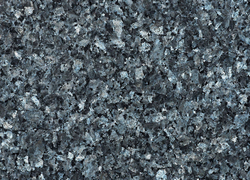 Labrador Blue Pearl
Labrador Blue Pearl 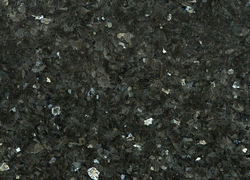 Emeral Pearl
Emeral Pearl 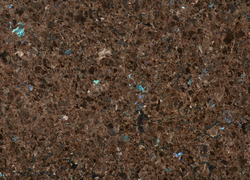 Labrador Antique
Labrador Antique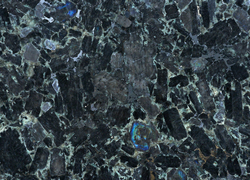 Volga Blue
Volga Blue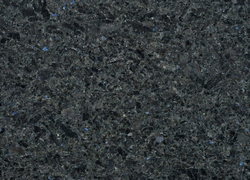 Blues in the Night
Blues in the Night 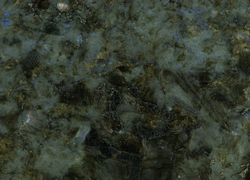 Labradorite Madagascar
Labradorite Madagascar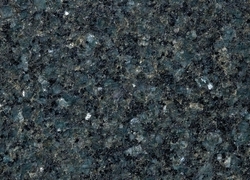 Verde Bahia
Verde Bahia
Labradorite in the history: the magic stones
Due to its variety of colours, labradorite was thought to be a magical stone and, back in the past, people believed that it could give great power over the human spirit. A sacred stone, a source of inspiration and knowledge closely connected to the Goddesses of the moon, who live in the Northern lights, where the souls move after the separation from their bodies, as the local legend says. The stone has the power of spiritual transformation, recommended for those who want to meditate or establish a connection to their inner self.
The staircase in our new office building made of Volga Blue seems to be inspired by these magical powers, too. It leads from the entrance hall to the offices on the first floor and, although the staircase is composed of very heavy stone steps, you may get the impression that the stairs hover above the snow white pavement made of Bianco Lhasa.


